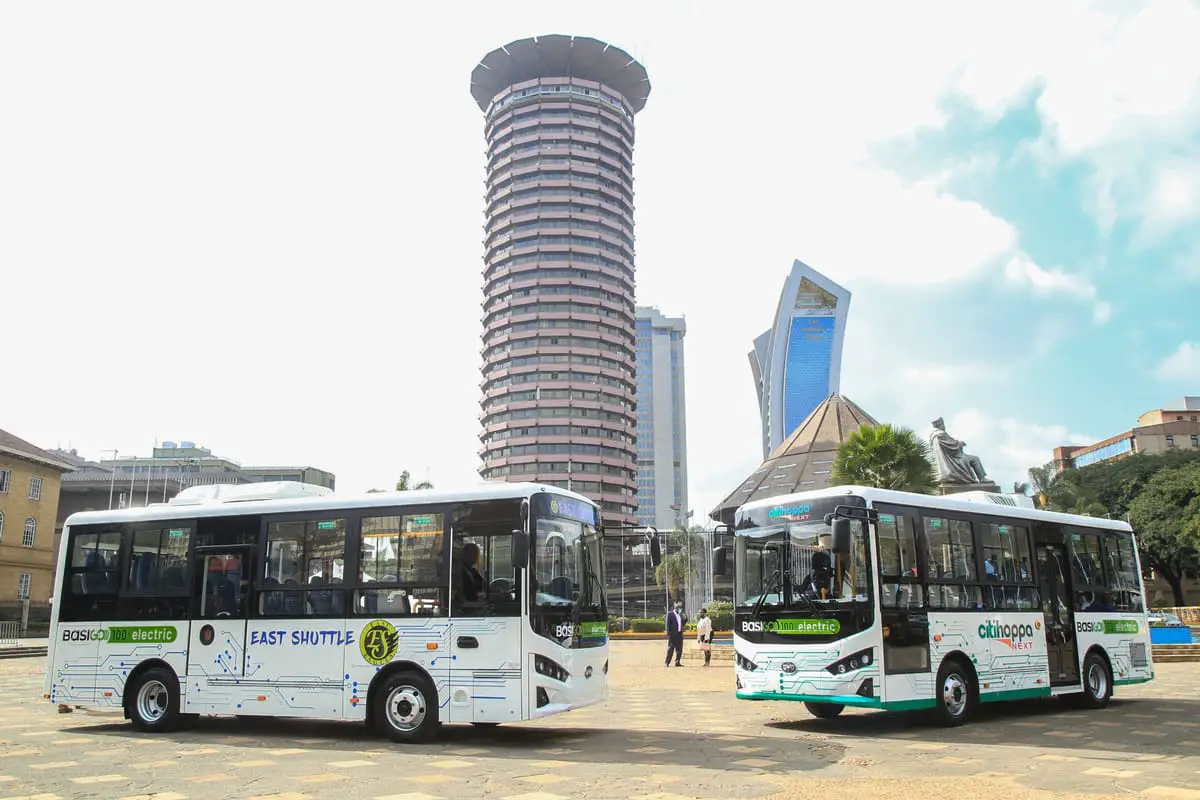Riding the Green Wave: The EV Revolution in Public Transportation.
In the bustling urban landscapes of today, where the rhythm of life is set by the ebb and flow of commuters, a quiet revolution is underway.

In the bustling urban landscapes of today, where the rhythm of life is set by the ebb and flow of commuters, a quiet revolution is underway.
From the iconic double-decker buses of London to the sleek trams gliding through the streets of Zurich, public transportation systems worldwide are embracing a new era of sustainability through the adoption of electric vehicles (EVs).
Gone are the days when the exhaust fumes of diesel buses clouded city streets and contributed to the choking smog that hangs over many urban centers.
Today, a growing number of cities are electrifying their public transportation fleets, heralding a cleaner, quieter, and more efficient way to move people from point A to point B.
Read: BasiGo E9 Kubwa electric bus.
At the forefront of this revolution are electric buses. These silent giants, powered by batteries or overhead wires, are becoming increasingly common sights on city streets around the globe.
With zero tailpipe emissions, electric buses offer a breath of fresh air for urban residents, literally and figuratively.
Take Shenzhen, China, for example. With a population of over 12 million, Shenzhen is one of the largest cities in the world, and until recently, it was also one of the most polluted.
However, since transitioning its entire fleet of over 16,000 buses to electric, Shenzhen has seen dramatic improvements in air quality, demonstrating the transformative potential of electrified public transportation.
But it's not just buses that are going electric. Trams and light rail systems, once synonymous with clunky overhead wires and noisy diesel engines, are also making the switch to cleaner, greener power sources.
Modern electric trams glide silently along tracks, powered by renewable energy sources, offering passengers a smooth and comfortable ride while minimizing environmental impact.
One of the key drivers behind the shift to electric public transportation is the growing recognition of the urgent need to address climate change.
With transportation accounting for a significant portion of global greenhouse gas emissions, electrifying public transit is a crucial step toward achieving carbon neutrality in our cities.
Moreover, electric public transportation offers a host of additional benefits beyond environmental sustainability.
Related: How and where to catch an electric bus.
Electric vehicles are often cheaper to operate and maintain than their diesel counterparts, thanks to lower fuel and maintenance costs.
They also provide a quieter and more pleasant passenger experience, free from the rumble and roar of traditional engines.
Furthermore, the electrification of public transportation can contribute to social equity by improving access to mobility for underserved communities.
In many cities, public transit is a lifeline for those who cannot afford or do not have access to private vehicles.
By making public transportation cleaner, more reliable, and more affordable, electrification initiatives can help bridge the gap between rich and poor and create more inclusive cities for all.
Of course, the transition to electric public transportation is not without its challenges.
Upgrading infrastructure, such as charging stations and overhead wires, can be costly and time-consuming.
There are also concerns about the environmental impact of producing batteries for electric vehicles and the need to ensure that electricity generation comes from renewable sources.
However, these challenges are not insurmountable, and the benefits of electrifying public transportation far outweigh the costs.
As cities around the world continue to grapple with the dual challenges of urbanization and climate change, electrifying public transit offers a beacon of hope for a brighter, greener future.
Read: BasiGo Delivers 5 New Electric Buses to Metro Trans Limited.
In conclusion, the EV revolution in public transportation represents a seismic shift in the way we think about mobility in our cities.
By embracing electric buses, trams, and trains, cities can reduce emissions, improve air quality, and create more sustainable and equitable transportation systems for all.
As we look to the future, let us ride the green wave toward a cleaner, greener, and more livable urban landscape.




